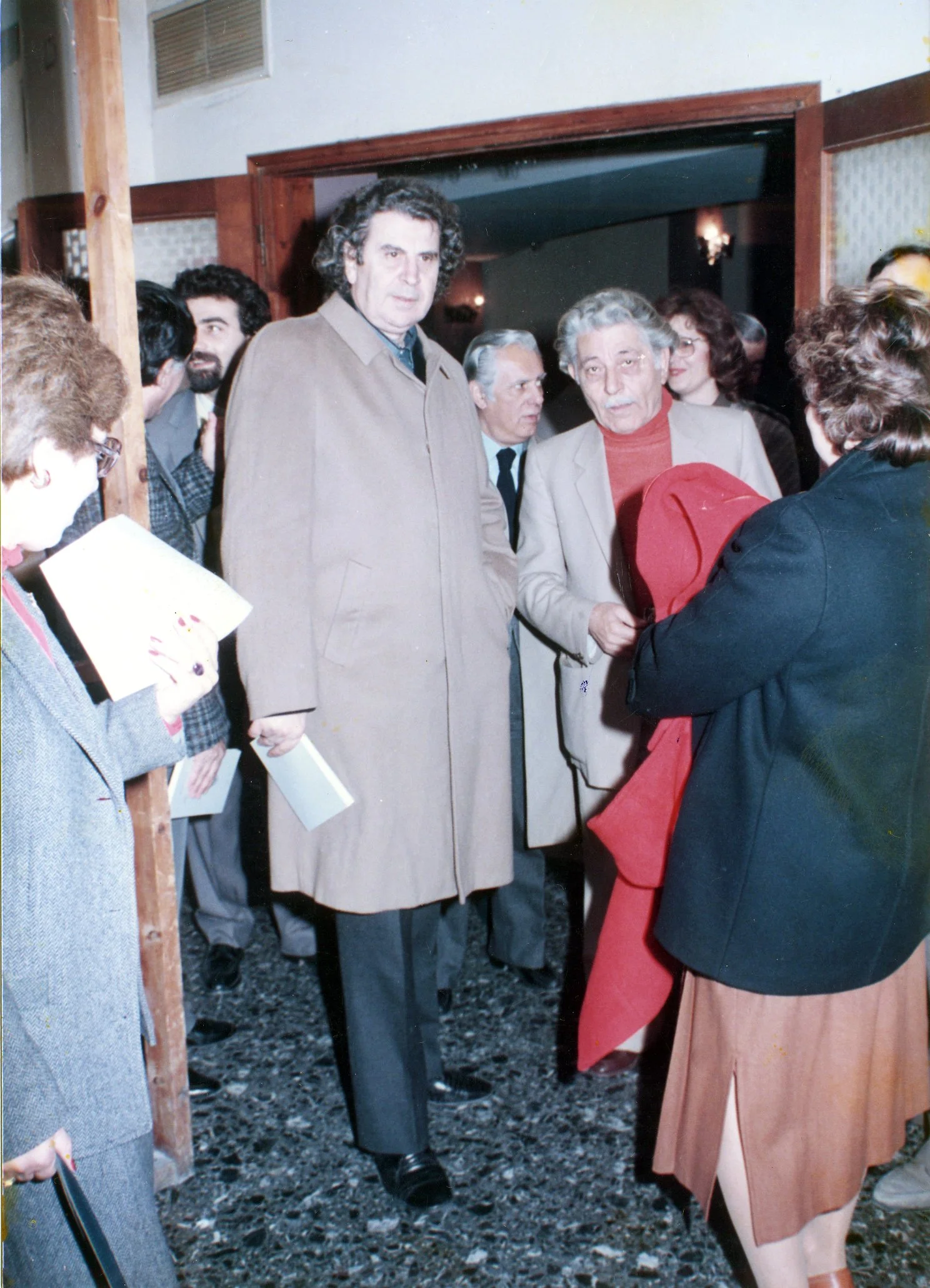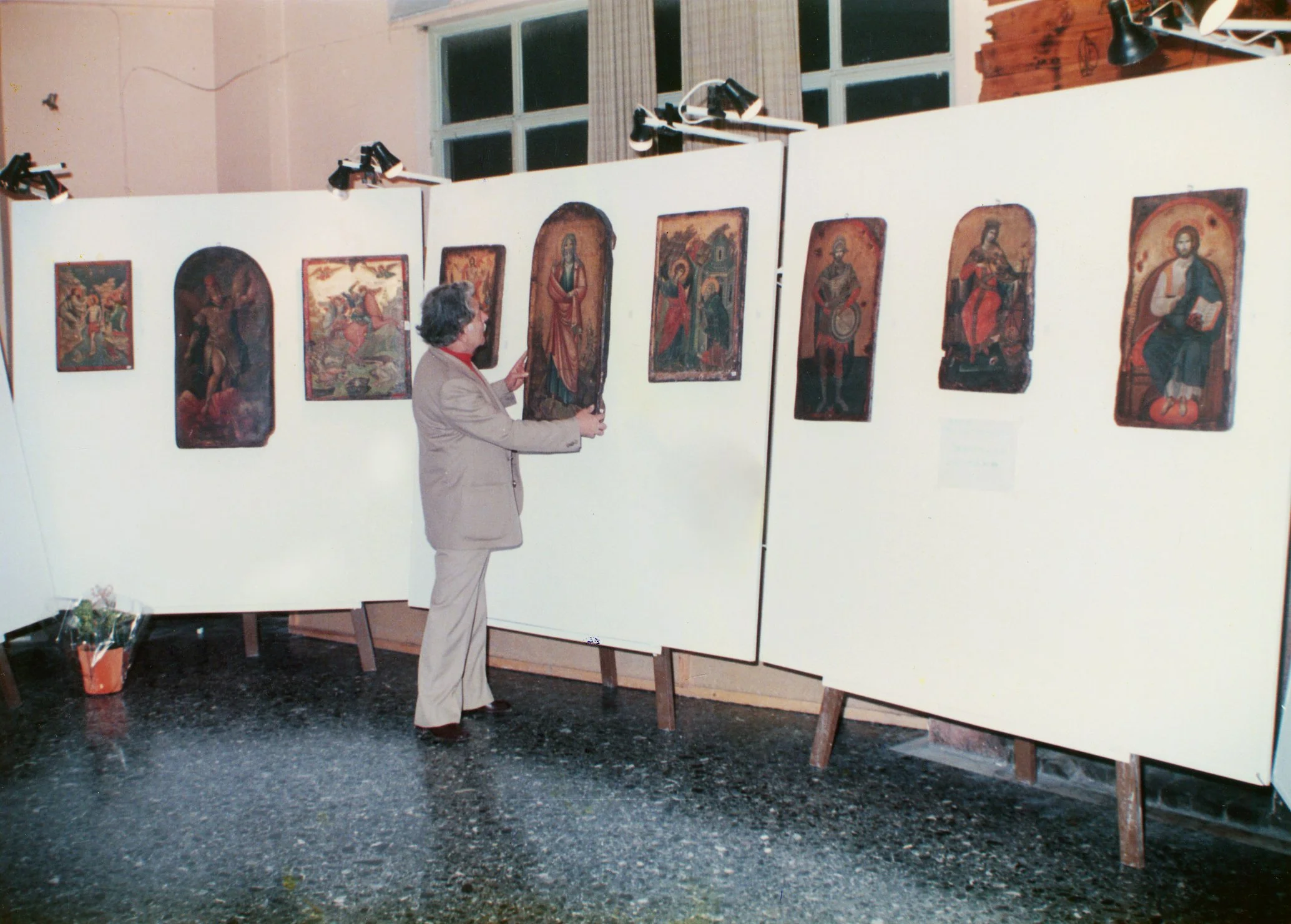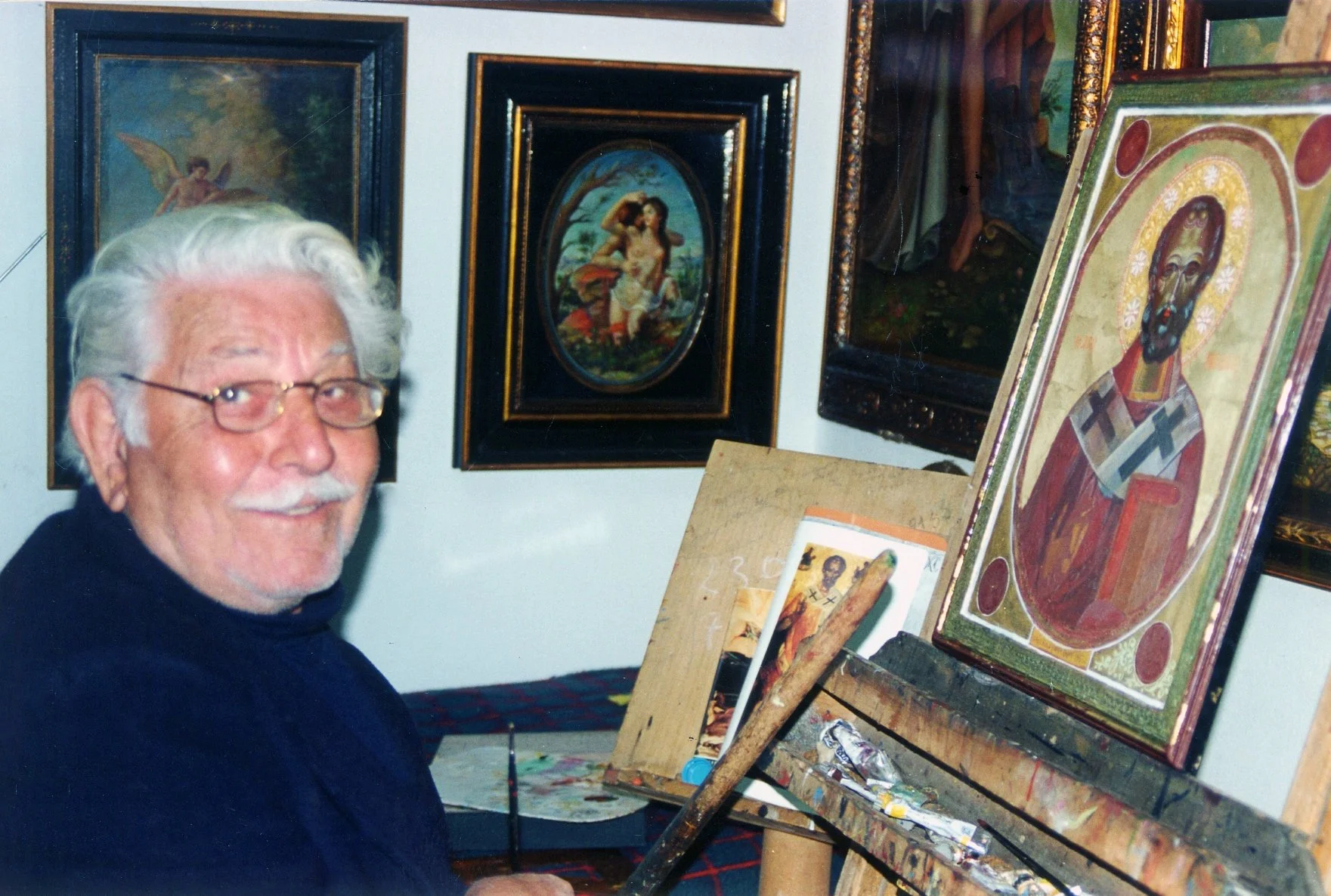BIOGRAPHY
Themistoklis Karfakis was born in Asprogerakata, Lefkada, to a family of farmers. He grew up with limited means, assisting his father with agricultural work. From an early age, he discovered a deep passion for painting. Driven by this creative calling, he soon felt compelled to leave rural life behind in pursuit of new opportunities and artistic fulfillment.
In 1940, he left Lefkada and worked in Amfilochia until the outbreak of World War II. At the age of 17, he joined the National Liberation Front (EAM), undertaking a series of high-risk missions and dedicating himself fully to the National Resistance and the fight for freedom. Together with two fellow comrades, he organized the armed resistance in Lefkada. He was tortured and repeatedly came close to death, yet managed to survive. During the Greek Civil War, he was persecuted and moved to Athens to find work, but due to the political climate, he was eventually forced to stop.
In 1950, despite difficult circumstances, he was admitted with distinction to the National Technical University of Athens (Metsovio Polytechnic). However, due to financial hardship, he was forced to discontinue his studies and pursue painting independently. In 1951, he held his first exhibition in Plaka, Athens.
Karfakis with composer and lyricist Mikis Theodorakis
Karfakis at his garden in Lefkada holding “Virgin Mary and Christ Child
His career soon took him abroad, where he traveled and worked in several European countries, including Germany, the Netherlands, England, and Belgium. In 1967 he moved to the Middle East, continuing his artistic activity in Jerusalem, Jordan, and Beirut, where he also exhibited his work.
Later, at the invitation of Archbishop Makarios, he visited Cyprus, where he painted portraits of prominent political figures and national heroes such as General Grivas, Archbishop Makarios, and Vassos Lyssarides. These works were donated to the Struggle Museum in Nicosia.
In 1979, he traveled and worked in Saudi Arabia and Kuwait.
Alongside this work, he cultivated his own artistic expression and presented exhibitions throughout the region. Over the years, he participated in more than 50 exhibitions in Greece and over 300 abroad. His oeuvre exceeds 400 works, including complete interior paintings of three churches located in Athens, Chalkidiki, and Lefkada.
Many of his works were donated to museums and institutions both in Greece and internationally, such as the Hellenic Maritime Museum and the Cretan Maritime Museum, the National Resistance Museum of Ilioupoli, charitable organizations like “Koinoniki Merimna Moschatou,” and numerous private collections.
Themistoklis Karfakis at his house in Lefkada
Karfakis setting up his iconographies
He became a member of the Chamber of Fine Arts of Greece and the Panhellenic Association of Iconographers.
Karfakis often likened his life to an “Odyssey without beginning or end,” marked by early struggles and hardships. A participant in the Greek National Resistance during World War II, he dedicated his life to both his homeland and his art. He traveled extensively across Europe, Asia, America, and Africa, devoting himself entirely to painting. Despite setbacks—including fraud that cost him important credentials and significant financial losses—he remained committed to his artistic vision.
He married, had two children and two grandchildren. In his later years, he chose to live in seclusion in his birthplace, Lefkada, where he painted tirelessly, often 16–18 hours a day.
Themistocles Karfakis passed away in 2014 at the age of 91. Today, his family continues to preserve and promote his legacy for future generations.
Themistoklis Karfakis at his studio working on a St. Nicolas iconography
All images are courtesy of © Themistoklis Karfakis archives,
Contact us
Interested in working together? Fill out some info and we will be in touch shortly. We can’t wait to hear from you!




